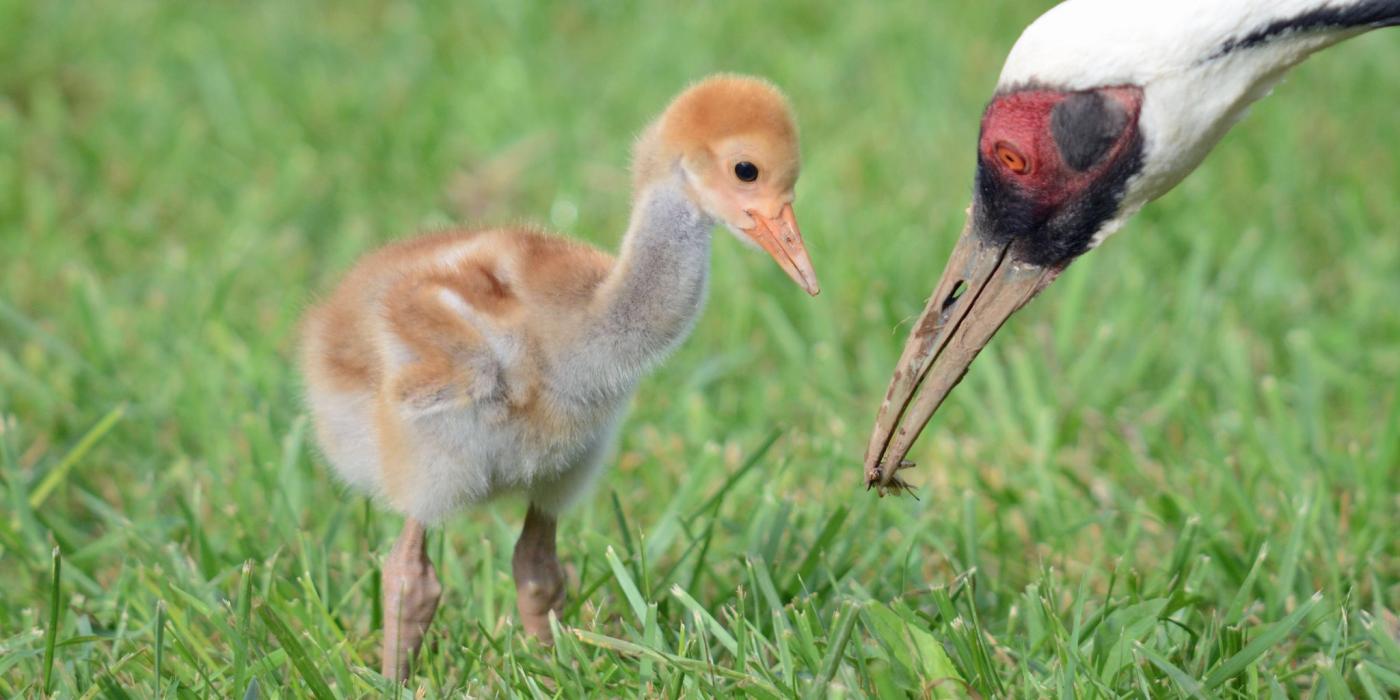SCBI Scientists Crack the Crane Case
For many endangered species, their future is only as promising as their genes are diverse. Genetic diversity is key to a population that is self-sustaining and can more effectively fight off disease. When it comes to cranes, which mate for life and produce relatively poor semen samples, bolstering genetic diversity has proven particularly challenging for conservationists.
Scientists at the Smithsonian Conservation Biology Institute (SCBI) are one step closer to effectively tailoring a conservation tool that could be the key to the future for many crane species. That tool is cryopreservation, or the freezing of sperm to be thawed and used later in artificial insemination. In a study published recently in Cryobiology, SCBI researchers explored the effective temperatures and rates for successfully cooling and thawing sperm from white-naped cranes.
“Right now we’re only able to do artificial insemination with fresh semen, which means we can’t transport samples between institutions,” says Nucharin Songsasen, an SCBI research biologist and co-author of the paper. “If we can perfect this methodology to freeze crane sperm, we will be able to manage the full population under human care much more effectively, and increase the species’ genetic diversity significantly.”
The researchers worked with animal care staff at SCBI in Front Royal, Virginia, to collect semen from four white-naped cranes. This was among the first studies to map the characteristics of crane semen, which is important for understanding the species’ reproductive physiology. Because of the unique shape of bird sperm (long and slender) and small volume of semen the animals produce, the scientists had to determine how much to dilute the samples, the unique freezing and thawing temperatures and rates, and the right concentration of cryoprotectant. If any of these elements are even slightly off, the sperm will die in greater numbers.
“Cryopreservation is important for any species, but especially important for endangered species so that those genes are not lost,” says Warren Lynch, the bird unit manager at SCBI and co-author on the paper. “It has the potential to allow founders or other genetically valuable individuals to be ‘resurrected’ many years after they are deceased, as was done a few years ago with a black-footed ferret that had been gone for 20 years.”
The next step is for researchers to perfect the methodology for freezing white-naped crane sperm and confirming whether thawed sperm can penetrate the membrane of an egg for successful fertilization. The findings from this research will have implications not just for white-naped cranes, but for similar species, including the hooded crane, another priority species. There are currently 61 white-naped cranes and only 26 hooded cranes in U.S. institutions (including 11 white-naped cranes and eight hooded cranes at SCBI). The International Union for Conservation of Nature Red List classifies both the white-naped crane and hooded crane as vulnerable.
“SCBI has the perfect combination of expertise to crack this case,” Songsasen said. “We have the research expertise, we have animal management expertise and we have the animals here. We look forward to adding cranes to our extensive frozen bank for endangered species.”
